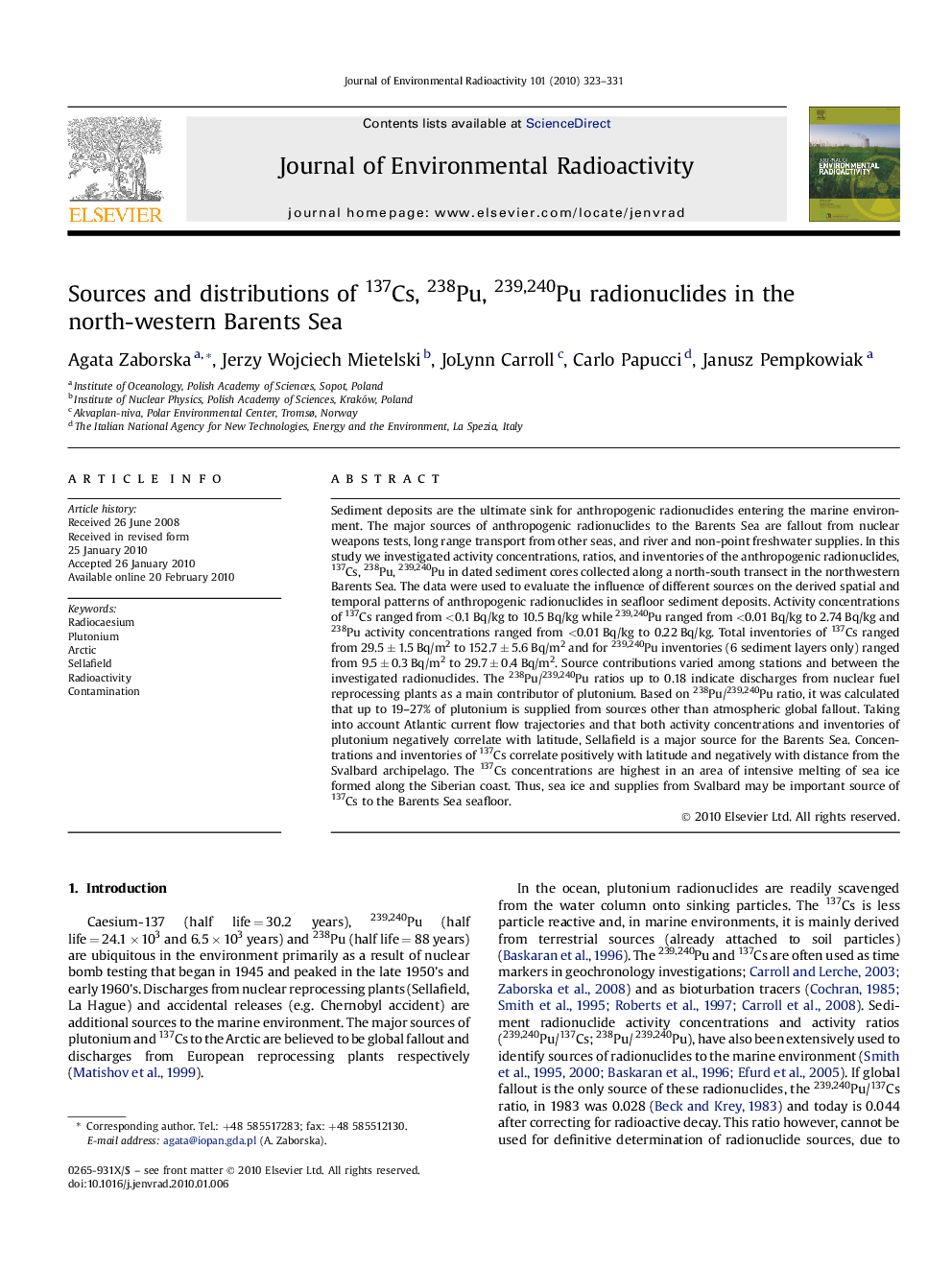| کد مقاله | کد نشریه | سال انتشار | مقاله انگلیسی | نسخه تمام متن |
|---|---|---|---|---|
| 1738751 | 1016811 | 2010 | 9 صفحه PDF | دانلود رایگان |

Sediment deposits are the ultimate sink for anthropogenic radionuclides entering the marine environment. The major sources of anthropogenic radionuclides to the Barents Sea are fallout from nuclear weapons tests, long range transport from other seas, and river and non-point freshwater supplies. In this study we investigated activity concentrations, ratios, and inventories of the anthropogenic radionuclides, 137Cs, 238Pu, 239,240Pu in dated sediment cores collected along a north-south transect in the northwestern Barents Sea. The data were used to evaluate the influence of different sources on the derived spatial and temporal patterns of anthropogenic radionuclides in seafloor sediment deposits. Activity concentrations of 137Cs ranged from <0.1 Bq/kg to 10.5 Bq/kg while 239,240Pu ranged from <0.01 Bq/kg to 2.74 Bq/kg and 238Pu activity concentrations ranged from <0.01 Bq/kg to 0.22 Bq/kg. Total inventories of 137Cs ranged from 29.5 ± 1.5 Bq/m2 to 152.7 ± 5.6 Bq/m2 and for 239,240Pu inventories (6 sediment layers only) ranged from 9.5 ± 0.3 Bq/m2 to 29.7 ± 0.4 Bq/m2. Source contributions varied among stations and between the investigated radionuclides. The 238Pu/239,240Pu ratios up to 0.18 indicate discharges from nuclear fuel reprocessing plants as a main contributor of plutonium. Based on 238Pu/239,240Pu ratio, it was calculated that up to 19–27% of plutonium is supplied from sources other than atmospheric global fallout. Taking into account Atlantic current flow trajectories and that both activity concentrations and inventories of plutonium negatively correlate with latitude, Sellafield is a major source for the Barents Sea. Concentrations and inventories of 137Cs correlate positively with latitude and negatively with distance from the Svalbard archipelago. The 137Cs concentrations are highest in an area of intensive melting of sea ice formed along the Siberian coast. Thus, sea ice and supplies from Svalbard may be important source of 137Cs to the Barents Sea seafloor.
Journal: Journal of Environmental Radioactivity - Volume 101, Issue 4, April 2010, Pages 323–331